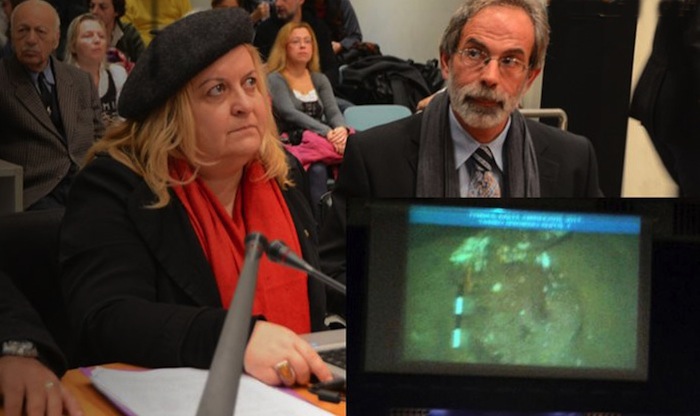Katerina Peristeri who led the excavation process at Amphipolis Tomb and head of the Antiquities Ephorate in Serres, northern Greece spoke about the excavation. Meanwhile, ministry officials noted that this will be the final press conference regarding the excavation, as archaeologists are now ready to begin their research.
Peristeri made special reference to the time that her team found the Caryatids, expressing her emotions. She noted that according to her assessment when the tomb chamber that hosted the Caryatids filled with sand, one of the beams fell, thus destroying the face of the magnificent statue.
“We came here in order to take you on a journey to Amphipolis,” said Peristeri. “In 2012 a small team of archaeologists set off to solve the hill’s mystery. The hill had been left untouched for many years, because no one believed that there was something there,” she added. This summer, Peristeri’s team uncovered the entrance of the tomb and that is when it all began. According to the team that worked on the excavation process, the tomb dates back to the last quarter of the 4th century BC.
Furthermore, it was revealed that during excavations archaeologists found several 2nd century coins from the era of Alexander the Great, as well as pottery items, a fact that had not been announced so far. When she was asked to provide details on the coins, Peristeri said that the coins were being processed.
Tension broke out in the Ministry of Culture amphitheater, at the end of the presentation, when journalists complained that Peristeri had not shown any pictures of the skeleton that was found in the tomb. The archaeologists showed them a picture of the remains that they found explaining that the protection of the skeleton is more important than a great picture.
During his speech, Michael Lefantzis said that the engraved Greek letters “E” and “A” that were found outside the tomb are typical of that specific era. He also stressed that the letters are not name initials, they are related to the construction work of the era.
Furthermore, Lefantzis noted that several marble pieces had been removed from the area outside the tomb, causing great destruction. Most of the marble pieces were used as dams for Struma river and other construction work.
See all the latest news from Greece and the world at Greekreporter.com. Contact our newsroom to report an update or send your story, photos and videos. Follow GR on Google News and subscribe here to our daily email!




